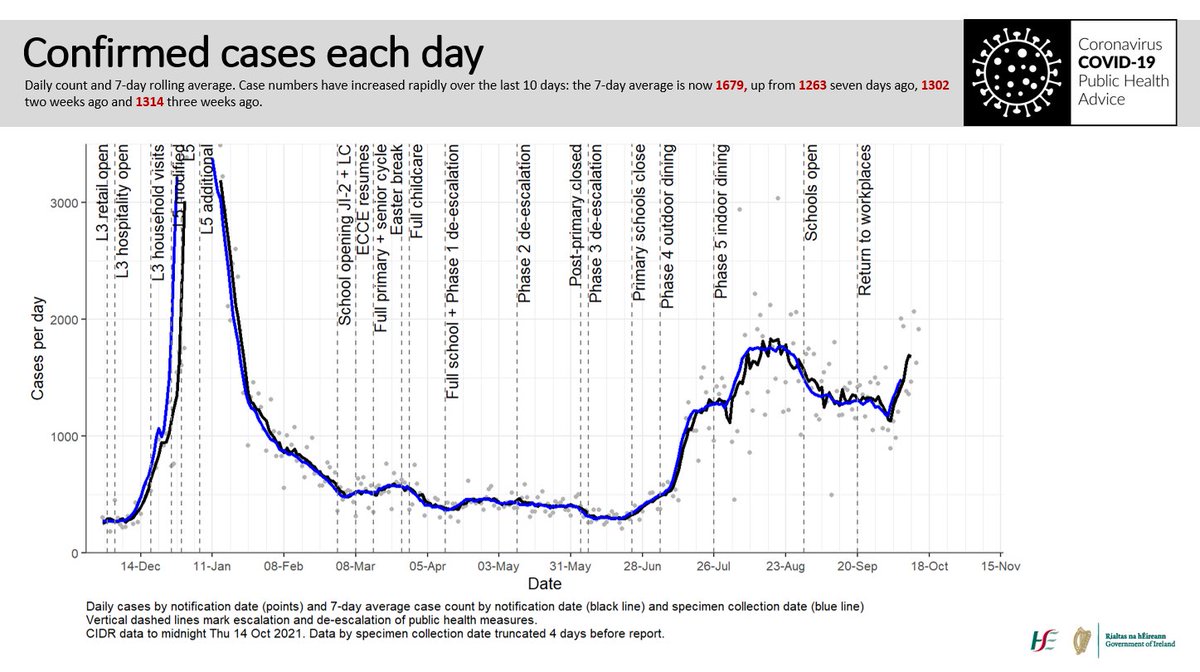We should not ignore or dismiss the rising numbers of SARS-CoV-2 infections. We monitor hospitalisations, intensive care admissions, and with great sadness, deaths, and we know where these numbers will go if we do not suppress transmission of the virus. 1/9 

Case numbers have been growing exponentially, at approximately 4% per day, since late June. The daily average case count on 23 June was 9 cases. If you add 3.9% every day, you get 12 cases on 1 July, 40 cases on 1 August, 131 on 1 Sept, and 430 today. 2/9 

Hospitalisations are delayed, but now also growing at about 4% per day. The daily average number of people in hospital with confirmed SARS-CoV-2 infection on 3 August was 12; increase that number by 4% per day and you get 37 on 1 Sept, and 121 on 1 Oct. 3/9 

Log-linear plots, where exponential growth follows a straight line, shows how well this simple exponential fits the data. 4/9 



The conclusion is that the epidemic, measured in detected cases and hospitalisations, has been growing exponentially, at the same rate, since July. We have, collectively, had too many social contacts. The virus is transmitting, and cases and hospitalisations growing. 5/9
The restrictions in Kildare, Laois and Offaly worked, and those in Dublin and Donegal may be starting to work, but the virus is spreading at a nearly constant rate throughout the rest of the country. 6/9 



If nothing changes, and cases and hospitalisations grow as they have been for the last few weeks, we could see 1200-1300 cases per day and 400 people in hospital by the end of October 7/9 



We are seeing people die – mortality with this virus is not negligible and significantly greater than influenza. The only way to protect the vulnerable is to greatly reduce the level of circulating virus in the community. 8/9 



This is not meant to scare people. It’s asking us to be honest with ourselves. And it’s not inevitable. On the contrary, if we redouble our efforts to minimize our social contacts, keep our distance when with others, and stay home if feeling unwell, we can beat this. 9/9
• • •
Missing some Tweet in this thread? You can try to
force a refresh





















